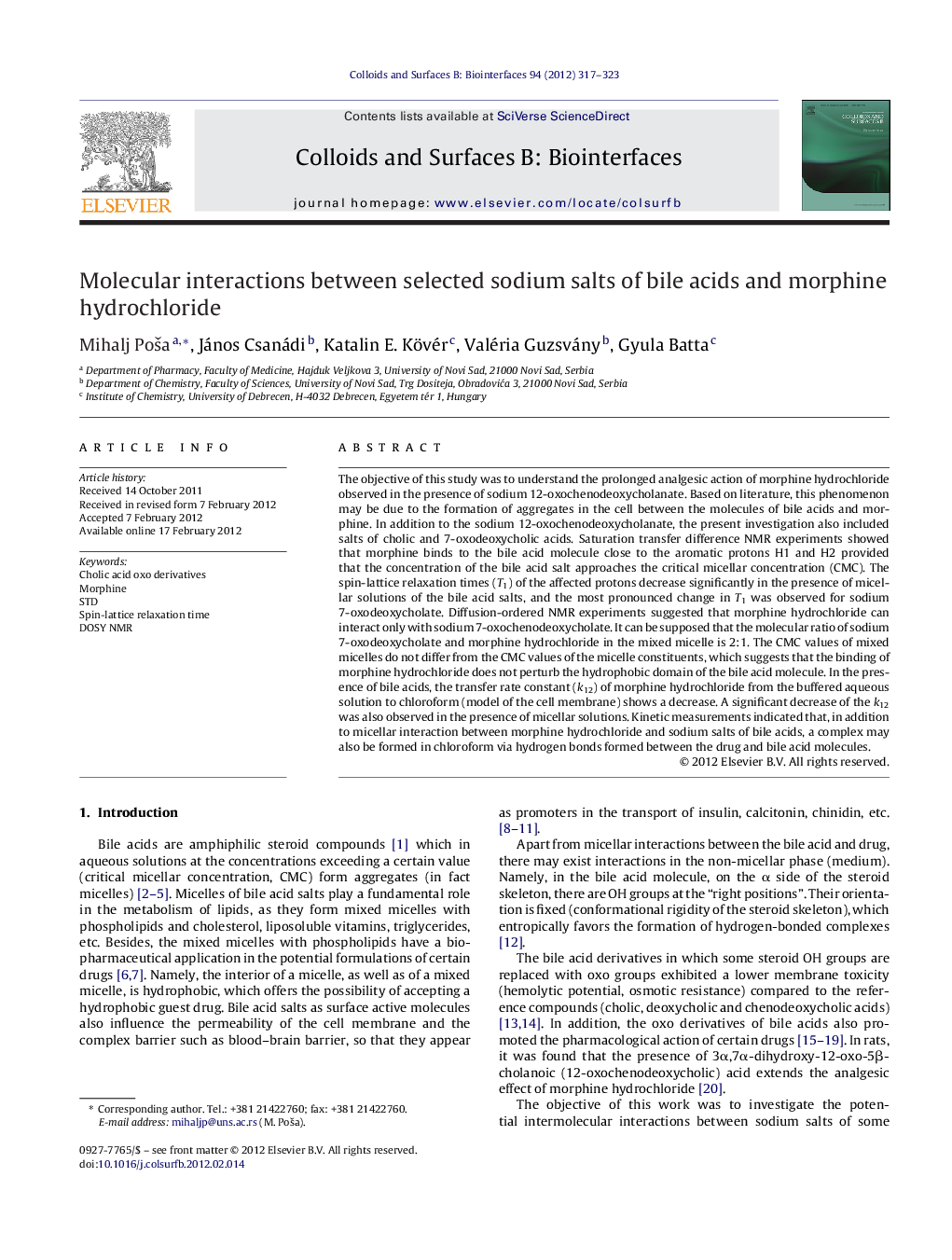| Article ID | Journal | Published Year | Pages | File Type |
|---|---|---|---|---|
| 600869 | Colloids and Surfaces B: Biointerfaces | 2012 | 7 Pages |
The objective of this study was to understand the prolonged analgesic action of morphine hydrochloride observed in the presence of sodium 12-oxochenodeoxycholanate. Based on literature, this phenomenon may be due to the formation of aggregates in the cell between the molecules of bile acids and morphine. In addition to the sodium 12-oxochenodeoxycholanate, the present investigation also included salts of cholic and 7-oxodeoxycholic acids. Saturation transfer difference NMR experiments showed that morphine binds to the bile acid molecule close to the aromatic protons H1 and H2 provided that the concentration of the bile acid salt approaches the critical micellar concentration (CMC). The spin-lattice relaxation times (T1) of the affected protons decrease significantly in the presence of micellar solutions of the bile acid salts, and the most pronounced change in T1 was observed for sodium 7-oxodeoxycholate. Diffusion-ordered NMR experiments suggested that morphine hydrochloride can interact only with sodium 7-oxochenodeoxycholate. It can be supposed that the molecular ratio of sodium 7-oxodeoxycholate and morphine hydrochloride in the mixed micelle is 2:1. The CMC values of mixed micelles do not differ from the CMC values of the micelle constituents, which suggests that the binding of morphine hydrochloride does not perturb the hydrophobic domain of the bile acid molecule. In the presence of bile acids, the transfer rate constant (k12) of morphine hydrochloride from the buffered aqueous solution to chloroform (model of the cell membrane) shows a decrease. A significant decrease of the k12 was also observed in the presence of micellar solutions. Kinetic measurements indicated that, in addition to micellar interaction between morphine hydrochloride and sodium salts of bile acids, a complex may also be formed in chloroform via hydrogen bonds formed between the drug and bile acid molecules.
Graphical abstractFigure optionsDownload full-size imageDownload as PowerPoint slideHighlights► Morphine hydrochloride binds only to the micellar bile acids. ► Binding of morphine molecule to bile acids takes place via the H1 and H2 aromatic protons. ► Kinetic experiments demonstrated the interaction between morphine hydrochloride and bile acids.
